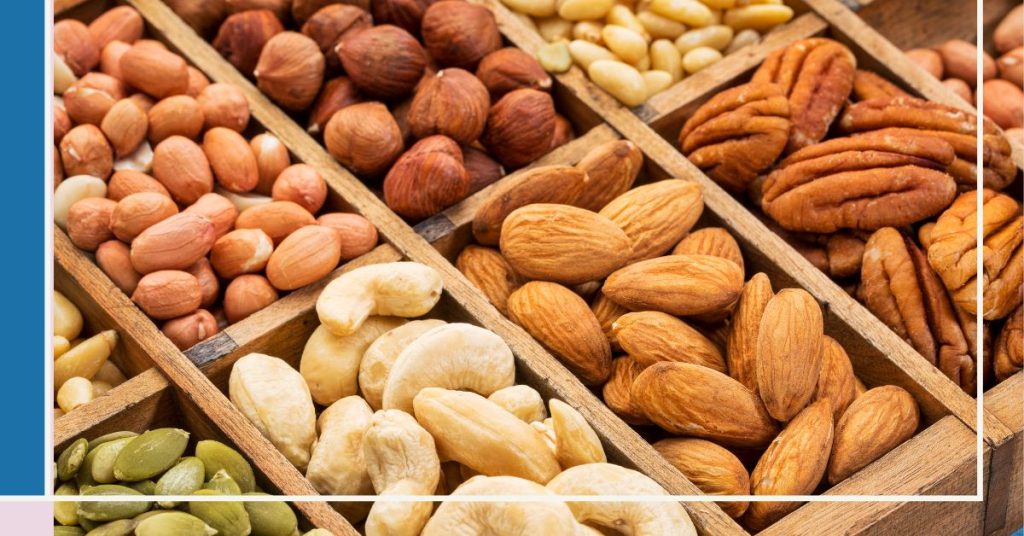Your Prediabetes Diet: A Plate Full of Power
Prediabetes isn’t a life sentence, and it certainly doesn’t mean giving up on delicious food. Think of it more like a wake-up call, a chance to make some positive changes to your diet and lifestyle. The good news is, with the right foods on your plate, you can take charge of your health and potentially reverse prediabetes altogether. Let’s dive into five power foods that can be your allies in this journey. We’ll explore how they work and how you can easily incorporate them into your daily meals. Remember, small changes can make a big difference!
Prediabetes: The Crossroads of Health
Prediabetes isn’t quite type 2 diabetes, but it’s a major warning sign that your body isn’t processing sugar as efficiently as it should. Think of it like a yellow light at the intersection of health. You can either slam on the brakes by making some healthy changes, or keep going and risk ending up with full-blown diabetes.
Left unmanaged, prediabetes can lead to a host of health problems like heart disease, nerve damage, and kidney issues. The good news? You have the power to change your path. By adopting a prediabetes diet, you can help your body better regulate blood sugar levels, reduce insulin resistance, and potentially reverse prediabetes altogether. It’s about making smart choices and taking control of your health.
Eating Your Way to Better Blood Sugar
Managing prediabetes isn’t just about cutting out sugary drinks and desserts (though that’s a great place to start!). It’s about adopting a well-rounded, nutritious diet that supports your overall health. Think of your food choices as the fuel that powers your body and helps it run smoothly.
A balanced prediabetes diet focuses on foods that are low in carbohydrates, high in fiber, and rich in essential nutrients. This means loading up on fresh fruits and vegetables, choosing whole grains over refined ones, and opting for lean proteins and healthy fats. By making these simple switches, you’ll help your body better manage blood sugar levels, reduce insulin resistance, and lower your risk of developing type 2 diabetes. It’s a win-win for your health and taste buds!
Power Food #1: Leafy Greens: Your Blood Sugar’s Best Friend
Leafy greens like spinach, kale, and Swiss chard aren’t just for salads; they’re superheroes for your prediabetes diet! Packed with vitamins, minerals, and fiber, these nutritional powerhouses can help regulate your blood sugar levels and keep you feeling full and satisfied. They’re low in calories and carbohydrates, making them the perfect addition to any meal.
Not only are leafy greens delicious, but they’re also incredibly versatile. Toss them into smoothies, stir-fries, soups, or even eggs for a boost of nutrients and flavor. Looking for a quick and easy snack? Try kale chips baked with a little olive oil and seasoning. They’re a crunchy, healthy alternative to traditional chips that will satisfy your cravings without sabotaging your blood sugar goals. So, don’t be afraid to go green! Your body will thank you.
Power Food #2: Berries: Nature’s Candy with a Healthy Twist
Berries are like nature’s candy, but without the sugar rush and crash. Blueberries, strawberries, raspberries – you name it, they’re all packed with antioxidants, vitamins, and fiber, making them a sweet treat that’s actually good for you.
Unlike other sugary snacks that can spike your blood sugar levels, berries have a low glycemic index (GI). This means they’re digested slowly, providing a steady stream of energy without causing those dreaded blood sugar spikes. Plus, the antioxidants in berries help protect your cells from damage and may even reduce the risk of complications from diabetes.
Add a handful of berries to your morning yogurt, blend them into smoothies, or enjoy them as a refreshing snack on their own. With their sweet, tangy flavor and impressive health benefits, berries are a delicious and easy way to upgrade your prediabetes diet.
Power Food #3: Whole Grains: Your Slow-Burning Energy Source
Whole grains are like the long-distance runners of the food world. They provide slow-burning energy that keeps you feeling full and satisfied, while also helping to regulate your blood sugar levels. Unlike refined grains, which are stripped of their nutrients, whole grains like quinoa, brown rice, and oats are packed with fiber, vitamins, and minerals that are essential for good health.
Fiber is the real star here, as it slows down the digestion process and prevents those sudden blood sugar spikes. It also helps promote healthy gut bacteria, which plays a vital role in overall well-being. So, ditch those refined carbs and opt for whole grains instead. Start your day with a bowl of oatmeal topped with berries and nuts, swap white rice for brown rice or quinoa, and make sandwiches with whole-grain bread. These simple changes can make a big difference in managing your prediabetes and improving your overall health.
Power Food #4: Nuts and Seeds: Tiny Powerhouses for Blood Sugar Control
Nuts and seeds are like the unsung heroes of the prediabetes diet. Packed with healthy fats, fiber, and protein, these tiny powerhouses can help keep your blood sugar levels steady and curb cravings.
Don’t let their small size fool you, nuts and seeds like almonds, walnuts, chia seeds, and flaxseeds are nutritional powerhouses. Their healthy fats can help improve insulin sensitivity, making it easier for your body to use glucose for energy. Fiber helps slow down digestion, preventing blood sugar spikes, while protein keeps you feeling full and satisfied.
Adding a handful of nuts and seeds to your daily routine is a breeze. Sprinkle them on yogurt or salads, blend them into smoothies, or enjoy them as a satisfying snack. Just remember, portion control is key, as these little gems are calorie-dense. So, go nuts (and seeds!) but in moderation, and you’ll be fueling your body with the right stuff for a healthier you.
Power Food #5: Legumes: The Little Beans That Pack a Punch
Legumes like lentils, chickpeas, and black beans are the unsung heroes of a prediabetes diet. These tiny powerhouses are packed with protein, fiber, and nutrients, making them a perfect addition to any meal.
Not only are legumes a great source of plant-based protein, but their high fiber content helps slow down digestion and keep blood sugar levels stable. They also boast a low glycemic index, meaning they won’t cause those unwanted blood sugar spikes.
Legumes are versatile and easy to incorporate into your daily meals. Toss them into salads, whip up a hearty lentil soup, or make a delicious black bean burger for a satisfying and healthy meal. With their mild flavor and impressive health benefits, legumes are a smart choice for managing prediabetes and supporting overall health. So, go ahead and add these little beans to your plate – your body will thank you!
Making Power Foods a Part of Your Everyday Routine
The best part about these power foods? They’re not hard to find, and they’re super easy to add to your daily meals and snacks.
Breakfast: Start your day off right with a bowl of oatmeal topped with berries and a sprinkle of nuts or seeds. Or, whip up a spinach and mushroom omelet for a protein-packed meal.
Lunch: Toss together a hearty salad with leafy greens, chickpeas, and a drizzle of olive oil and vinegar. Or, enjoy a lentil soup with whole-grain bread for a satisfying and filling lunch.
Dinner: Grill up some salmon or chicken breast and serve it with a side of roasted vegetables and quinoa. Or, try a vegetarian chili made with black beans, lentils, and plenty of veggies.
Snacks: Keep a bag of almonds or walnuts on hand for a quick and easy snack. Or, dip some apple slices in nut butter for a satisfying sweet treat.
Remember, variety is key! Don’t be afraid to experiment with different combinations of these power foods to keep your meals exciting and your taste buds happy. By incorporating these healthy choices into your daily routine, you’ll be well on your way to conquering prediabetes and achieving optimal health.
Leveling Up Your Lifestyle: Beyond the Plate
Pairing a prediabetes diet with other healthy habits is like a turbo boost for your overall well-being. It’s about creating a holistic approach to managing your health.
Move It: Regular exercise, like a brisk walk or a jog, helps your body use insulin more effectively and manage blood sugar levels. Aim for at least 30 minutes of moderate-intensity exercise most days of the week.
Catch Your Zzz’s: Adequate sleep is crucial for regulating hormones and metabolism, both of which play a role in blood sugar control. Aim for 7-8 hours of quality sleep each night.
Stress Less: Chronic stress can raise cortisol levels, which can increase blood sugar. Find healthy ways to manage stress, like meditation, yoga, or spending time in nature.
Remember, every small step you take toward a healthier lifestyle adds up. By embracing these simple changes, you’ll be well on your way to conquering prediabetes and feeling your best.
Take Charge of Your Health: Your Prediabetes Diet Awaits
Eating for prediabetes isn’t about deprivation, it’s about empowerment. By filling your plate with these five power foods—leafy greens, berries, whole grains, nuts and seeds, and legumes—you’re not just managing prediabetes, you’re fueling your body for a healthier future. Combine these dietary changes with regular exercise, good sleep, and stress management, and you’ll be well on your way to conquering prediabetes and feeling your absolute best. Remember, every healthy choice you make is a step in the right direction.





